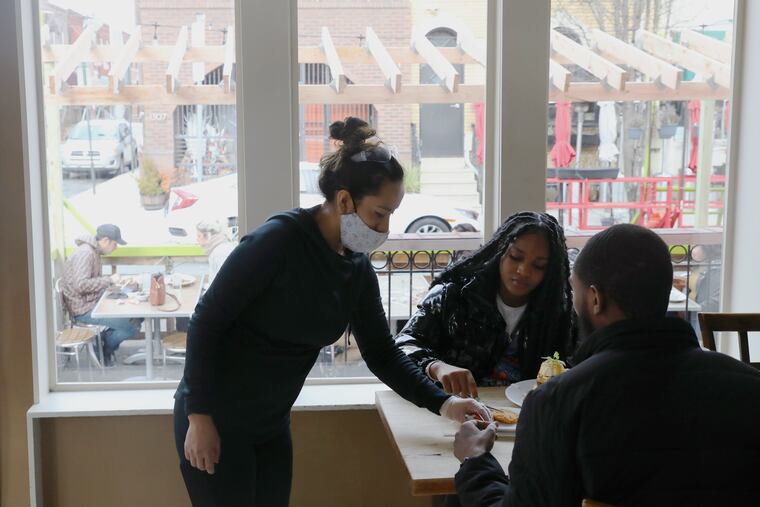Philly’s new indoor dining guidelines fail both restaurants and customers | Opinion
Why are our rules so drastically different than the rest of the commonwealth’s?

On Wednesday, the Philadelphia Health Department released complicated and flawed ventilation guidelines for restaurants to increase indoor dining to 50% occupancy as of Friday. Philadelphia’s restaurant community does not support these guidelines. The basic principle here is that COVID-19 does not transmit differently in Philadelphia. Stop punishing us like it does by holding our restaurants to a higher standard than the one applied to the rest of the state.
The top priority of our restaurant operators is the safety of our teams and patrons. The new guidelines — which allow restaurants to open indoors at 50% capacity if they document that their ventilation sufficiently circulates air at least 15 times per hour — fail to protect both. Furthermore, these stipulations afflict businesses that are struggling to survive by requiring significant financial investment to meet unrealistic and unachievable standards. No other type of business in the city will be required to follow these guidelines.
In the fall, restaurants operated at 50% occupancy and without ventilation standards with no documented impact on case counts or outbreaks. We suggest aligning Philadelphia’s restrictions with the state Department of Health’s guidelines, which state that establishments can operate at 50% capacity if they self-certify on their mitigation strategies and safety. The virus does not operate differently in Philadelphia than it does elsewhere in Pennsylvania, so why are our rules so drastically different than the rest of the commonwealth’s?
Had the city treated our industry as true partners and allowed for conversation and feedback in this process, these discrepancies could have been addressed and perhaps a simpler solution could have been achieved. We are not asking to expand indoor dining without restrictions. Instead, we are calling on city officials, City Council, and Mayor Jim Kenney to rethink and implement commonsense solutions to work with the restaurant industry to protect diners, employees, and owners. Demanding costly updates to HVAC systems, window fans, or other ventilation equipment creates an impractical barrier for many restaurants.
Professional mechanical engineers and HVAC technicians have voiced concerns with the methodology, equipment, and expected outcomes for airflow outlined in the guidelines, particularly around the accuracy of such measurements and the inability to change a system’s set number of air exchanges. While the guidelines may assume that the average restaurant owner could perform such measurements, the professionals disagree. In fact, they emphatically discourage an untrained individual from attempting to make these changes.
The time the city’s Department of Health spent creating new guidelines should have been spent clarifying and revising existing standards, enforcing the commonsense existing rules such as mask-wearing, social distancing, and the 50% occupancy allowed elsewhere, and establishing a FAQ page on the Department of Health’s website to help operators comply with the intent of existing requirements. Instead, we now have new guidelines that are unenforceable and unachievable — neither of which contribute to the overall safety of diners, employees, or owners.
Qamara Edwards is the director of business and events for Sojourn Philly and Philadelphia chapter president for the Pennsylvania Restaurant and Lodging Association.